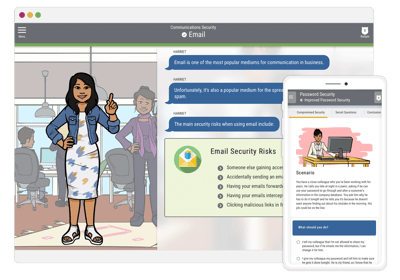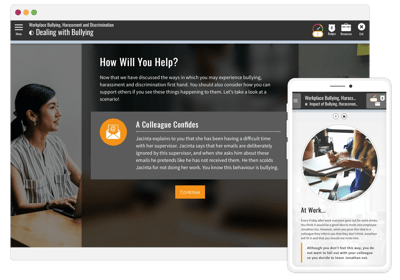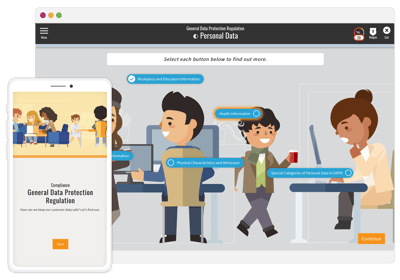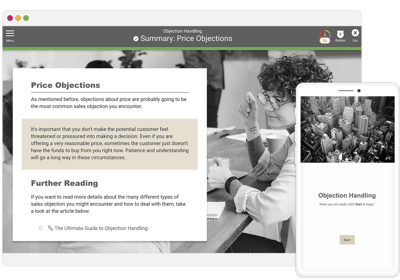Context can make all the difference.
When you read, say, a really old story (perhaps a Shakespeare play or an ancient myth) not everything will make sense to you immediately. Maybe the characters are saying phrases you don’t understand, or doing things you find strange that are never acknowledged as being strange in the text. A lot of the time, this is because you don’t have the context surrounding the story. Understanding the culture the text belongs to can not only clarify things you might’ve found odd but can also add whole new layers of meaning that you never would’ve realised otherwise.
Context is the difference between something vague and something that is both meaningful and useful.
This principle applies to eLearning as much as it does to anything else. A generic training module is a wondrous thing, because it can be used in so many different places for so many different purposes—but off the shelf training solutions won’t reach their full potential if they remain generic. It’s like the outline of a drawing—it’s great for getting the general idea of what you want to depict, but the real vibrancy of it comes out when you start to fill out the spaces.
Putting a generic module into context means taking the material you are given and changing it to suit the needs of a particular audience, as well as the culture and strategy of your business. The appropriate context makes the content more relevant and understandable to the audience and therefore more useful to them. It also gives you the opportunity to connect the content of the course to the culture and overall strategy of your organisation in a way that doesn’t feel forced.
That all sounds good, but how do you achieve it?
Understand the learner's needs
Remember, one of the main reasons that contextualisation is important is so that it can target the needs of your particular organisation. To do this, you need to understand exactly what those needs are.
Ask yourself questions like:
-
What is the business trying to achieve with this training?
-
What do the learners already know?
-
What could the learners benefit from knowing more about?
-
How does the content relate to the culture and strategy of the organisation?
Understanding the needs of both the audience and the organisation is the first step to contextualising appropriately.
Use scenarios and examples
In many cases, the theoretical content of a generic module (for example, product training, communication skills, management training) will be applicable to almost anyone. It might only need minor tweaking, like a new branded visual theme, to suit your specific organisation.

Practical applications of this theory is, however, a very different story. It’s all well and good to have generic content about, say, the dangers of fraud. Fraud is dangerous to everyone. But what that theoretical content looks like in practice for one organisation is likely to be very different to what it looks like in another. This is a perfect opportunity for you to make the link between the generic content and the specific culture and strategy of your business.
To really give your learners a solid understanding of the theory, it’s important to show them examples of how it applies in ways that are relevant to them. This will give them practical knowledge that can aid them in their actual work and give them a better understanding of the way their own organisation works. By using specific examples from real life, or scenarios that could be real, you can demonstrate the concepts with an impact that a generic example just won’t have.
Supply extra resources
Adding links to external resources like articles, academic texts, videos or datasets can help enhance your eLearning by giving learners a deeper understanding of difficult concepts and a starting point for further research. By guiding the learner towards appropriate resources that reflect the culture and strategy of the organisation, you can help them grapple with harder ideas and allow them to explore for themselves.
A generic module is unlikely to have a lot of resources, or if it does, they’re probably generic too. To give your learners the best opportunities to both deepen and broaden their understanding of the topics, provide them with resources specific to their needs. As with the scenarios and examples mentioned above, giving them easy access to resources that relate to their specific field or practical concerns will turn a generic module into one that is directly useful for the learner.
To sum up, contextualisation is an incredibly important part of using pre-made, off-the-shelf online learning. So before you invest in eLearning, ensure that you choose a software or solution that enables modification to reflect the specific circumstances and needs of your organisation and your people.

.png)

